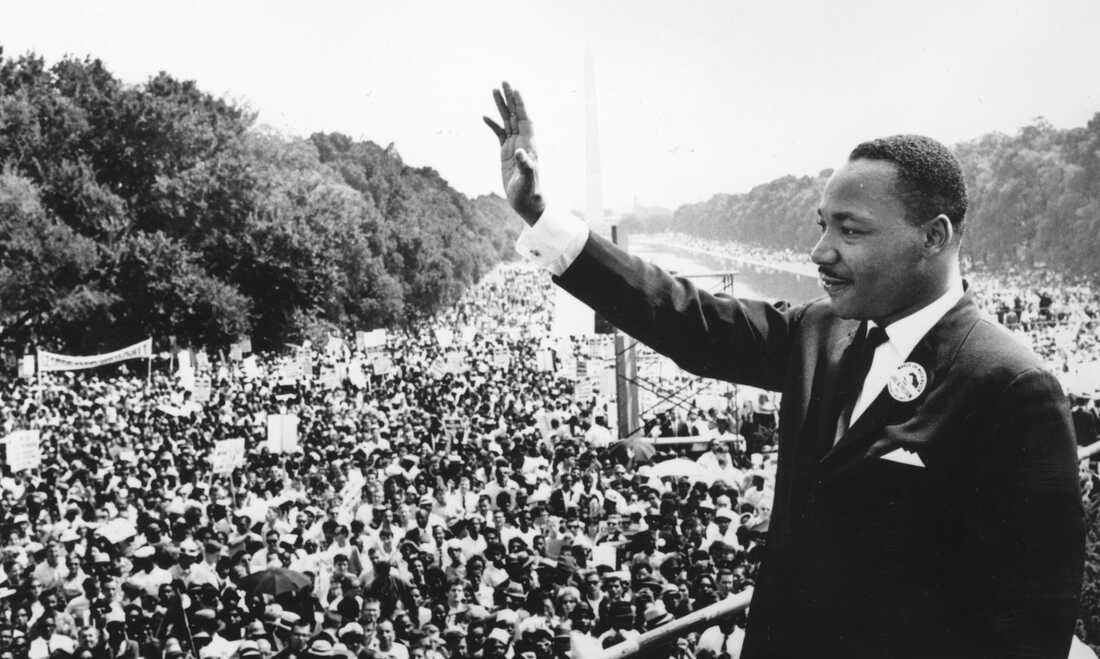

History of Martin Luther King, Jr. Day

On August 28, 1963, Reverend Dr. Martin Luther King, Jr., stood on the National Mall before hundreds of thousands of demonstrators who had gathered to march for freedom, justice, and equality. On that day, King shared a dream that has continued to inspire a nation: To bring justice where there is injustice, freedom where there is oppression, peace where there is violence, and opportunity where there is poverty.
On November 2, 1983, President Ronald Reagan signed the King Holiday Bill into law, designating the third Monday in January a federal holiday in observance of civil rights leader Dr. Martin Luther King, Jr. The legislation to recognize Martin Luther King, Jr. (MLK) Day was first introduced just four days after his assassination on April 4, 1958, by Michigan Congressman John Conyers. Despite the national fervor inspired by King’s death, the bill to create a holiday in his honor languished for 15-years with limited congressional support. However, Congressman Conyers continued to reintroduce the bill every year with the support of the Congressional Black Caucus which Conyers helped found.
“To me, [King} is the outstanding international leader of the 20th century without ever holding office. What he did, I doubt anyone else could have done.” – Congressman Conyers.
In 1979, on the 50th anniversary of King’s birth, the bill finally came to a vote in the House. However, even with a petition of 300,000 signatures in support, the backing of President Jimmy Carter, and testimonials from King’s widow, Coretta Scott King, the bill was rejected by five votes in the House. Despite the bill failing to pass, support for the bill continued to grow, in no small part due to musician Stevie Wonder. The singer and songwriter’s 1980 album “Hotter Than July” featured the song “Happy Birthday” which served as an ode to King’s vision and a rallying cry for recognition of his achievements. Wonder continued to spread his message with regular appearances alongside Coretta Scott King at rallies. He also capped a four-month tour with a benefit concert on the National Mall, where King delivered his famous “I Have a Dream” speech 18 years earlier.
When the bill again made it to the House floor in 1983, fifteen years after King’s murder, support was overwhelming. Working together, Coretta Scott King, the Congressional Black Caucus, and Stevie Wonder amassed a six million signature petition in favor of the holiday. The bill easily passed in the House with a vote of 338 to 90.
Today, people of all backgrounds continue that march — raising their voices to confront abuses of power, challenging hate and discrimination, protecting the right to vote, and fighting for access to quality jobs, health care, housing, and education. On this day, we reflect on the legacy of a man who issued a call to the conscience of our Nation and our world.
Fascinating Facts:
- Martin Luther King, Jr. Day celebrates his birthday and is observed on the third Monday of January.
- It took 15-years of persistence by civil rights activists for the holiday to be approved by the federal government and an additional 17 years for it to be recognized by all 50 states.
- The National Football League moved the 1993 Super Bowl from Tempe, Arizona to Pasadena, California because Arizona voters failed to pass the King Holiday Bill. Arizona voters would approve the King holiday two years later.
- On August 23, 1982, the King Center organized a march in Washington that included an estimated 500,000 people. Coretta Scott King, along with Stevie Wonder, presented a petition signed by 6 million people to House leader Congressman Tip O’Neill.
- His birth name was Michael King, Jr., but his father later legally changed both of their names to Martin Luther King after the Protestant reformer Martin Luther.
- Halfway through his speech at the 1963 March on Washington, gospel singer Mahalia Jackson shouted: “Tell them about the dream, Martin!” This inspired King to improvise his famous “I Have a Dream” speech.
Inspirational Quotes:
- “Life's most persistent and urgent question is: What are you doing for others?”
- "The ultimate measure of a man is not where he stands in moments of convenience and comfort, but where he stands at times of challenge and controversy."
- “Darkness cannot drive out darkness; only light can do that. Hate cannot drive out hate, only love can do that.”
- "A man dies when he refuses to stand up for that which is right. A man dies when he refuses to stand up for justice. A man dies when he refuses to take a stand for that which is true."
- "Injustice anywhere is a threat to justice everywhere. We are caught in an inescapable network of mutuality, tied in a single garment of destiny. Whatever affects one directly, affects all indirectly."
Sources:
- https://www.whitehouse.gov/briefing-room/presidential-actions/2022/01/14/a-proclamation-on-martin-luther-king-jr-federal-holiday-2022/
- https://nmaahc.si.edu/explore/stories/15-year-battle-martin-luther-king-jr-day
- https://www.npr.org/2010/01/18/122701268/i-have-a-dream-speech-in-its-entirety
- https://www.census.gov/newsroom/stories/martin-luther-king-jr-day.html
- https://ourlutherking.com/interesting-martin-luther-king-facts/
- https://www.bbc.com/news/world-us-canada-64244643

